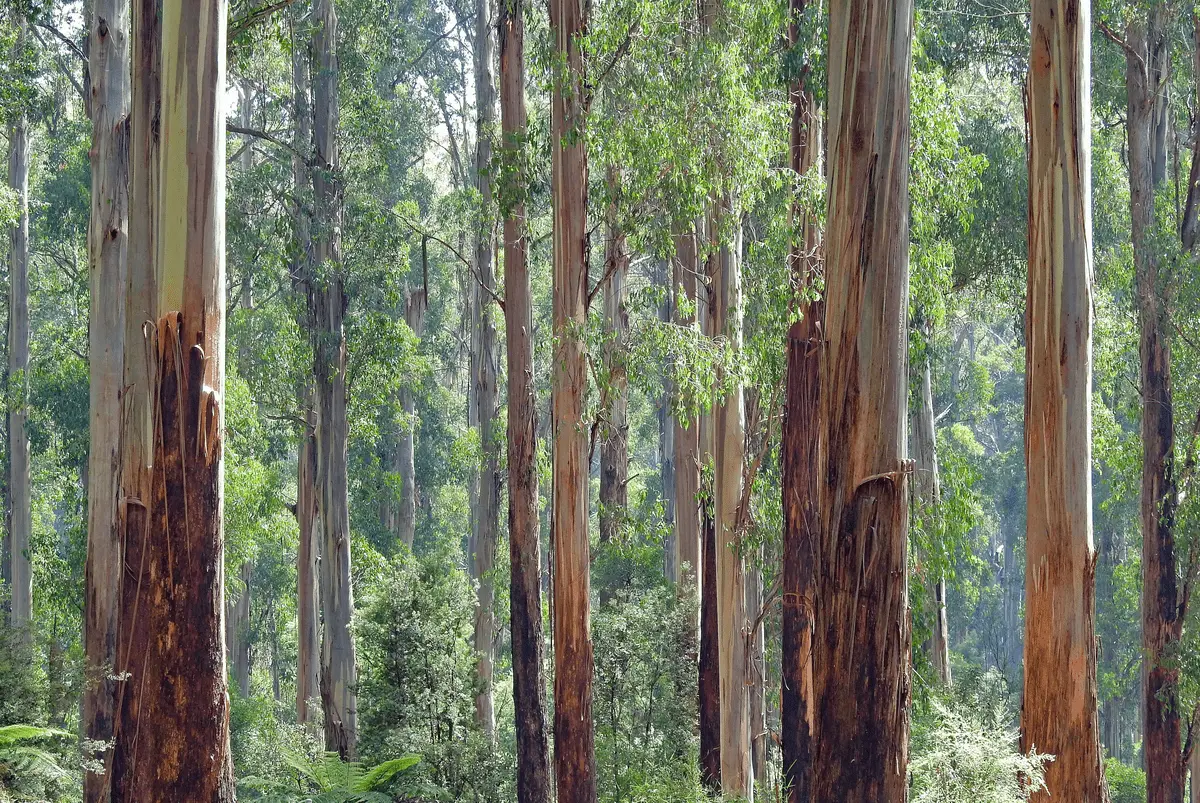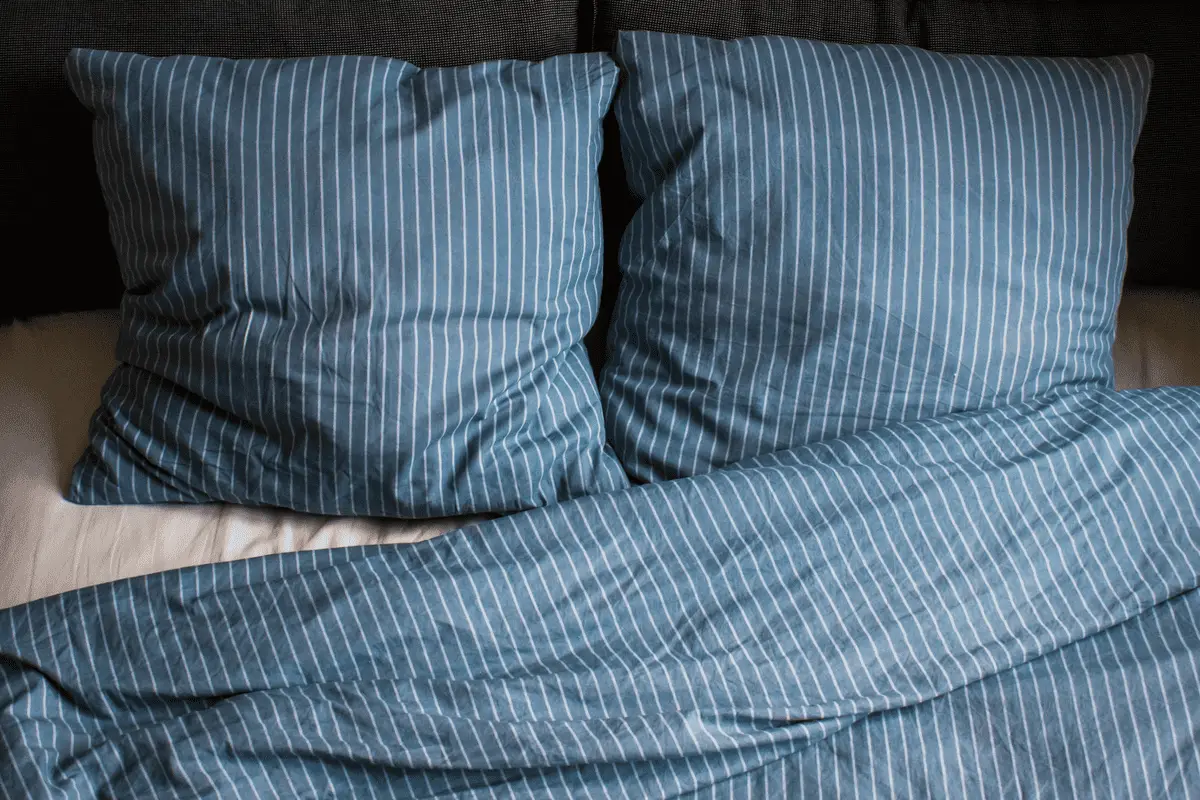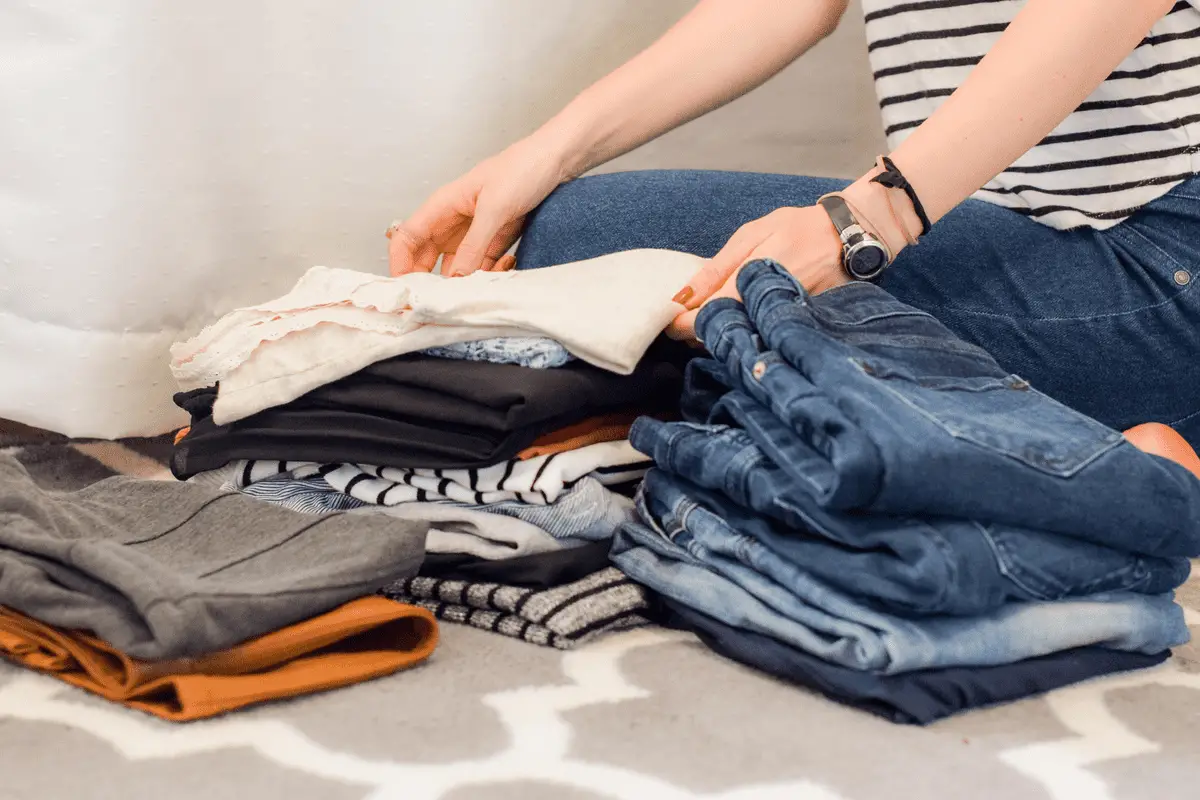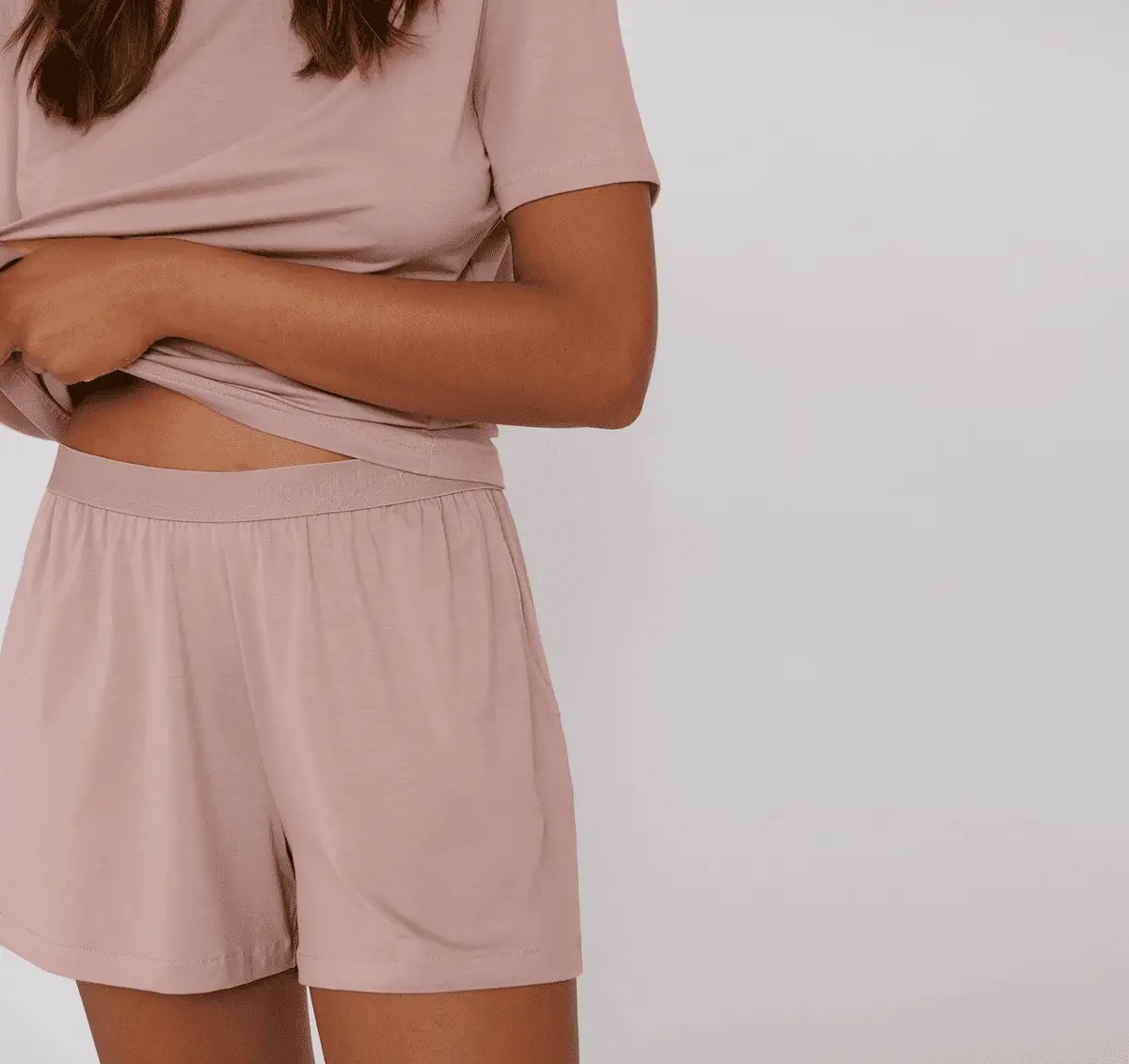Quick Links
As fast fashion continues to rise, it is high time consumers embark on sustainable fashion. Knowing what fabric is in your garments is one step towards sustainable fashion. You have probably come across lyocell fabric, commonly known as Tencel, in your shopping for sustainable fabric.
Lyocell is one fabric that has won the hearts of many in the sustainable fashion world. But what is lyocell fabric? Is it really sustainable? Let’s find out!
What is lyocell fabric?
Lyocell fabric is a semi-synthetic fabric derived from wood cellulose. Lyocell fabric is primarily derived from eucalyptus trees but can also be derived from bamboo, oak, and birch trees.
Lyocell fabric is considered a semi-synthetic fiber because it is a cellulose fiber processed with synthetic materials. Thus, it is also known as processed cellulosic fiber.
It is a high-end fabric similar to viscose and modal fabrics but regarded as more eco-friendly than its counterparts since its production process is more sustainable.
It is often used as an alternative to silk.
How is lyocell made?
Making lyocell fibers begins with harvesting trees, in most cases, the eucalyptus trees. The trees are then broken down into tiny pieces of wood chips.
The wood chips are dissolved in chemicals to make wood pulp. The wood pulp is washed with water and sometimes sanitized with bleach. After washing, it is dried into sheets and then rolled into spools.
The next step involves breaking down the sheets into small squares and dissolving them in amine oxide. The dissolved cellulose is filtered to form a clear liquid.
The cellulose is then spun to form long thin fibers. The fibers are passed through diluted amine oxide solution and then in demineralized water to wash them.
The lyocell fibers are then dried and lubricated using soap or silicon.
After lubrication, the fibers are carded to separate and make strands. The strands are cut and baled, ready to be used as fabric. The manufacturers may blend lyocell material with other fibers such as cotton or wool at this final stage. Depending on the intended use, dyes and other finishes can also be added to it, from soft to silky feel.
Who manufactures Lyocell fabric?
Lyocell fiber dates back to the 19th century when researchers looked to make artificial silk. In the 1970s, an American company named Enka produced lyocell through a pilot program but could not bring it to commercialization.
A British company named Courtaulds started the large-scale manufacture of lyocell. Later, Lenzing AG, an Austrian-based company, acquired Courtaulds and is now the leading manufacturer of lyocell and other sustainable fabrics such as modal and viscose across the globe.
Lenzing manufactures lyocell under the Tencel brand. This is why lyocell is commonly known as Tencel. Tencel lyocell is obtained from sustainably sourced eucalyptus wood and ethically manufactured.
Is lyocell a sustainable fabric?

Lyocell is among the most sustainable fabrics in the fashion industry. The primary ingredient of lyocell, cellulose from eucalyptus wood, is obtained from sustainably managed forests.
Eucalyptus trees are fast-growing, with many varieties taking less than ten years to reach maturity. Also, the trees do not require irrigation or pesticides and can typically grow on unproductive land.
The manufacturing process of lyocell employs a closed-loop system. One spectacular thing about lyocell production is that 99% of the amine oxide used in the manufacture of lyocell is recoverable and can be reused in the production of lyocell infinitely.
The water in the diluted amine oxide is evaporated, and the solution is reused.
Also, the amine oxide is non-toxic. This means that the production of lyocell produces no harmful products and is significantly less wasteful than other natural fibers.
The manufacturing process is also environmentally friendly since it utilizes less energy and water than other fabrics. The entire process is simple and only takes about 2 hours, unlike other artificial fibers.
Finally, lyocell is naturally biodegradable unless combined with non-biodegradable synthetic fibers such as nylon and polyester.
However, it is essential to note that as much as lyocell is sustainable, it can also be a victim of greenwashing. Lenzing AG, the company that manufactures the Tencel lyocell and the pioneer in sustainable fabrics, is very transparent about its sourcing and manufacturing processes.
As you shop for sustainable fabrics, do a little more research about a specific brand to see whether their lyocell is sustainably sourced and ethically manufactured.
Advantages of lyocell
Moisture wicking– lyocell is perfect when it comes to absorbing moisture. It perfectly keeps the sweat off your body. It is suitable for hot weather as it keeps your body cool. When it comes to moisture wicking, lyocell is even better than modal. Lyocell is very breathable and hence perfect for activewear and sportswear.
Perfect for sensitive skin– If you have sensitive skin prone to irritation, lyocell fabric is ideal. Its soft touch and smooth surface make it suitable for people with sensitive skin.
Durable– Lyocell is strong and elastic hence very durable. Its strength and elasticity makes it perfect for outdoor activities and activewear.
Sustainable – Lyocell is among the most sustainable fabrics in the world. Not only is it derived from natural resources, but its production process is also environmentally friendly. It is made in a closed-loop process that produces almost zero waste.
Soft and visually appealing– Lyocell makes you feel great in your outfits with its rich and luxurious look.
It does not shrink– Lyocell resists wrinkles.
Lyocell can be blended with other fabrics such as cotton, polyester, wool, and silk.
Disadvantages of lyocell
A bit pricey– lyocell is quite expensive compared to conventional fibers such as cotton. The technology behind its production process makes it expensive.
When blended with other synthetic fibers such as spandex and polyesters, it becomes non-compostable and hence not eco-friendly.
As a delicate fiber, it requires specific care regarding washing, drying, and ironing. (Not too much of a big deal, though- read on to learn how to care for lyocell fabric)
Uses of lyocell

Lyocell was developed as a substitute for silk and cotton. Lyocell is used to make almost everything from lyocell sheets, dresses, shirts, towels, and underwear.
Common uses of lyocell fabric include:
Activewear for its excellent moisture-wicking properties.
Industrial applications to make conveyor belts due to their strength and elasticity. Conveyor belts made of lyocell are strong and resistant to wear and tear.
Medical applications- Lyocell is highly tensile and has high absorbency hence perfect for medical dressings.
How to care for lyocell

While lyocell is a durable fiber, it is undoubtedly essential to take good care of it. Knowing how to care for your lyocell garments will increase their lifespan and usability.
As with any other nicer-end fabric, lyocell fabric requires extra care. Remember always to check the garment care label. As a basic guide, here is what to do;
Washing
Handwashing in cold water is the best way to clean your lyocell fabric. If you must machine wash, use the gentle cycle or the cycle for delicates. A cold cycle is actually energy-saving (A plus for the environment).
Also, to avoid damaging your lyocell clothing, use a gentle detergent and avoid bleaches and softeners. Lyocell is already soft, so you don’t need extra softeners.
Removing stains
In case your lyocell garment gets stained, avoid using bleach. Immediately after the garment is stained, wash with warm or cold water. If this doesn’t work, try spot cleaning with some wool laundry detergent and gently clean with a wet cloth.
Avoid scrubbing as this will damage your fabric.
Drying
Sun drying or air drying is the best way to dry your lyocell garments. If the two options are not available, machine dry on low heat.
Ironing
You can wear lyocell clothing without ironing as it resists wrinkles. To remove any wrinkles, try steaming.
If you don’t have a steamer, use the steam setting of your iron to hover over the garment, or use the warm iron setting and gently press on your garment.
Avoid direct heat on your lyocell fabrics, as it may scorch the fabric.
Eco-friendly Brands using lyocell
1. Tentree

Tentree is a sustainable clothing brand that believes in putting the planet and people first. It employs ethical manufacturing practices and uses eco-friendly materials such as Tencel lyocell, organic cotton, hemp, and recycled polyester.
Whether you are looking for t-shirts, tops, sweaters, pants, or dresses, Tentree has them all.
Tentree also plants ten trees for every item you buy from them.
2. Patagonia

Love outdooring? Patagonia is the leading sustainable brand for outdoor and sports gear for activities such as hiking, surfing, snowboarding, etc.
They use Tencel and other sustainable fabrics in all their apparel.
3. Allbirds

Allbirds is particularly popular with eco-friendly sneakers and activewear. They blend Tencel lyocell with eco-friendly organic cotton wool for their activewear, underwear, leggings, and sweatpants.
Allbirds observes sustainable manufacturing practices and is carbon neutral.
4. Organic Basics

Organic basics core mission is sustainability. One of the ways they are achieving sustainability is by using eco-friendly materials such as Tencel Lyocell, recycled nylon, and GOTS-certified organic cotton.
Shop eco-friendly and ethically made lyocell activewear, dresses, shorts, and everyday essentials from Organic Basics for both men and women.
5. Toad & Co

Toad & Co is another sustainable clothing brand with a wide range of men’s and women’s clothing. The brand uses Tencel lyocell along with other sustainable materials such as Lenzing modal, organic cotton, and hemp.
6. LA Relaxed

La Relaxed is an ethical clothing brand for women. They use sustainable materials to make beautiful clothing pieces that guarantee ultimate style and comfort.
They have a collection of Tencel lyocell dresses, cardigans, leggings, and shorts.
How does lyocell compare with other fabrics
Lyocell vs. viscose rayon
Both lyocell and viscose are semi-synthetic fabrics made from plant cellulose. Viscose rayon was the first cellulose fabric to be invented.
The viscose production process is almost similar to that of lyocell but has a greater environmental impact. It utilizes sodium hydroxide as a solvent and is more energy intensive than lyocell fabric.
Lyocell has higher absorbency and drapes better than viscose. Thus, lyocell is suitable for everyday fabrics, from clothing to medical dressings, while viscose is common in products such as upholstery, diapers, feminine hygiene products, and bed linens.
Viscose is cheaper than lyocell.
Lyocell vs. Modal
Lyocell and modal have many similarities, and it is easy to confuse them. They are both high-quality fabrics, highly breathable, soft, and biodegradable.
The significant difference between lyocell and modal is the raw materials. Lyocell is mainly produced from eucalyptus trees, while modal is made from beech trees.
Also, lyocell’s production process is more eco-friendly than modal as it utilizes a closed loop process, and the pulp is dissolved physically. In contrast, modal is dissolved chemically using sodium hydroxide.
Lyocell vs. Cotton
Lyocell and cotton are both plant-based fabrics with almost similar uses but very different at the same time.
While both fabrics are durable, cotton is vulnerable to pilling, unlike lyocell, which can resist pilling when properly taken care of. Lyocell is a delicate fabric and thus requires extra care for maintenance, unlike cotton.
One significant advantage of lyocell over cotton is sustainability. Traditional cotton requires fertilizers, water, and pesticides to grow. Lyocell raw materials can grow on land not suitable for use and require no irrigation or pesticides.
In terms of cost, cotton is definitely cheaper than lyocell. Even the most expensive cotton is still more affordable than lyocell.
Lyocell vs. Polyester
Lyocell is a semi-synthetic fiber made from plant cellulose, while polyester is a fully synthetic fiber made from petrochemicals.
Lyocell has many advantages over polyester, starting with environmental benefits. Lyocell is biodegradable and processed with less toxic chemicals. Polyester fabric is quite the opposite.
Also, as polyester is made with harsh chemicals, it is likely to cause health problems like allergic reactions and cancer. Lyocell is non toxic thus hypoallergic.
Lyocell is more comfortable and safe to wear than polyester.
Brands using polyester need to step up to become more people and environmentally friendly.
Lyocell FAQs
1. Is Lyocell natural or synthetic?
Lyocell is neither 100% natural nor 100% synthetic, it is a semi-synthetic fabric. The raw material for lyocell is plant-based cellulose which is processed with synthetic substances.
The semi-synthetic fabric is biodegradable unless blended with fully synthetic fibers such as polyester and nylon.
2. Is Lyocell a good material?
Lyocell is a good material for both people and the environment.
It is a high-quality material, comfortable to wear, durable, protects against UV, and is antibacterial.
It is also sustainable, made from eco-friendly materials, and produced through a closed-loop process.
3. Does Lyocell shrink?
When well taken care of, lyocell does not shrink. However, expect it to shrink in the first wash by about 3%.
Lyocell only shrinks when exposed to high temperatures during washing or drying. That’s why it’s essential to use cold water when washing, as mentioned above in the lyocell care guide.
4. Does Lyocell wrinkle?
Unlike other cellulosic fibers such as cotton and linen, lyocell isn’t prone to wrinkling.
Of course, the fabric may have a few wrinkles after washing, which you can remove with the lowest temperature of your iron setting.
5. Is Lyocell breathable?
Lyocell is a very breathable material. It has excellent moisture-wicking properties. That’s why it is common in bedding essentials, summer clothing, and activewear.
Make lyocell your go-to fabric if you sweat a lot or live in a humid area. Lyocell guarantees you comfort and freshness all day.
6. Is Lyocell stretchy?
Lyocell is stretchy. Though not as stretchy as spandex or rubber, lyocell fabric stretches and will return to its original size no matter how many times you stretch it. It does not stretch out of shape with time.
Blending lyocell with other stretchy materials like spandex can help increase its stretchiness.
7. Is Lyocell the same as cotton?
Lyocell is not the same as cotton but is often used as a substitute for cotton. Both cotton and lyocell are cellulosic and sustainable fibers.
One distinct advantage of lyocell over cotton is its ability to wick moisture and durability.
8. How much does Lyocell fabric cost?
Compared to other fabrics, lyocell is quite expensive. Lyocell is considered a luxury fiber hence the price. Though it requires a fatter wallet, it is worth prioritizing quality and the environment over everything else.
Final thoughts
Lyocell is a sustainable alternative to other fibers and is definitely worth the attention it is getting from sustainable fashion brands. If you want to make your wardrobe more environmentally friendly, choosing lyocell clothing is the best place to start.
If you already own a few pieces of lyocell garments, tell us how you feel about them. Do you think lyocell performs better than cotton? Let us know!
